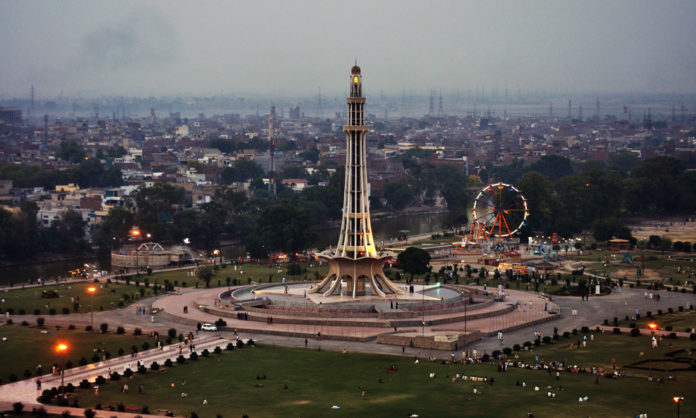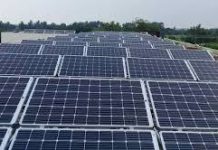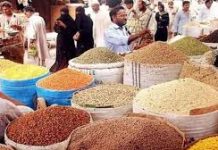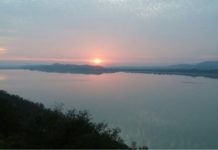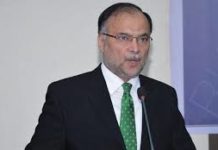By Muhammad Luqman
The government of Pakistan’s Punjab province is planning to carve out a new modern city along the river Ravi on the north of Lahore to help check the influx of people to the provincial capital.
The present Lahore city , spread over 1717 square kilometres , is home to more than 11 million people and the second biggest urban centre in Pakistan , only after Karachi, the port city of the South Asian county.
To execute the project being developed on the lines of Dubai city, River Ravi Front Authority has been constituted with province’s Chief Minister as its head.
The new city being developed over an area of 404 square kilometres , will have 1.4 million residential units to accommodate at least five million people.
In this new state-of-the-art city, construction of high rise buildings will be the top priority of the government.
According to the master plan of the upcoming city, The project running along the River in a northeast-southwest direction, will set a new centre of the City in the districts of Lahore and Sheikhupura. As per the original plan, the new City would be developed on both sides of the riverbank along a 33-kilometre long stretch contiguous to Lahore district’s northern and western boundaries.
The government is also considering a proposal to sell over 25,000 acres of riverfront to investors for business and cultural activities.
The new city will have a big lake and 3 barrages . With the completion of this project, not only the growing problems of climate, water and traffic will be overcome but also an investment of Rs 5000 billion is likely to pour in from the private sector.
The scheme, originally conceived by the government of former Chief Minister , Shahbaz Sharif in 2013 was shelved due to the dearth of requisite foreign investment of $7.5 billion, comprises a number of residential and commercial zones, medical city and forest reserve besides a central business district.
World-renowned engineering company Meinhardt was hired by the government of Pakistan, in 2014, to run a feasibility study on River Ravi for the execution of the urban development project. In its report, the firm highlighted the problem areas of the project and gave some recommendations to Lahore Development Authority (LDA) for smooth development:
The riverfront is projected to be developed on the lines of the one on the banks of River Thames that runs through London.
But the development of new city along river Ravi poses a number of challenges too. Getting water in River Ravi during the winter season is one of the biggest challenges to the launch of new city project in Punjab as the Marala-Ravi Link Canal is closed in winters
The dumping of wastewater into River Ravi is another major challenge that needs to be addressed. Approximately, 65 cusecs to 584,000 cusecs of wastewater are directly poured into River Ravi
The new city project in Punjab will attract foreign tourists as the establishment of an international airport is also in the master plan. Close proximity to the airport will be a major lure for foreign tourists visiting the city
The new city project in Punjab is expected to be a major breakthrough in the real estate sector of the region.
Development of new cities to help stop the migration to already chocking urban centres has been a decades old dream of successive governments. PML (N) government of former Prime Minister Nawaz Sharif chalked out a plan to develop 45 new cities in the year 2016.
Of these new towns, also given the name of smart cities, 17 smart cities had to be developed in Balochistan, 12 in the Punjab and eight each in Sindh and Khyber-Pakhtunkhwa.
The major objective of the smart cities project was to bring the people of less developed areas at par with the developed cities of the country and also check the growing migration of the people from these areas to the developed parts, where the civic infrastructure was already unable to take the burden of the growing population.
Development of new cities has become more important due to the fact that the of Urban population in Pakistan has increased from 32 % of the population in 1998 to over 40% ; if current trends of rural to urban migration continue, this share will exceed 50 % in 2025. Currently, nine cities have populations exceeding 1 million each, and 75 with populations between 100,000 and 1 million. Pakistan’s existing cities contribute 78% to the country’s GDP and 1% increase in urbanisation leads to a 1.1% increase in the economic growth rate.
But population influx is badly straining the existing urban centres. The inability of the cities to absorb, comfortably accommodate, and meaningfully employ rural-to-urban migrants exacerbates social and ethnic tensions between ‘native’ and ‘migrant’ segments, besides creating a host of other problems.
With the development of new cities like the one being developed along river Ravi, the burden of people’s influx to the major centres of the country for jobs, education, health cover and better living standard would reduce. The law and order situation would be effectively managed in these new cities as the government would make sure that the population of these new urban centres do not exceed one million.


